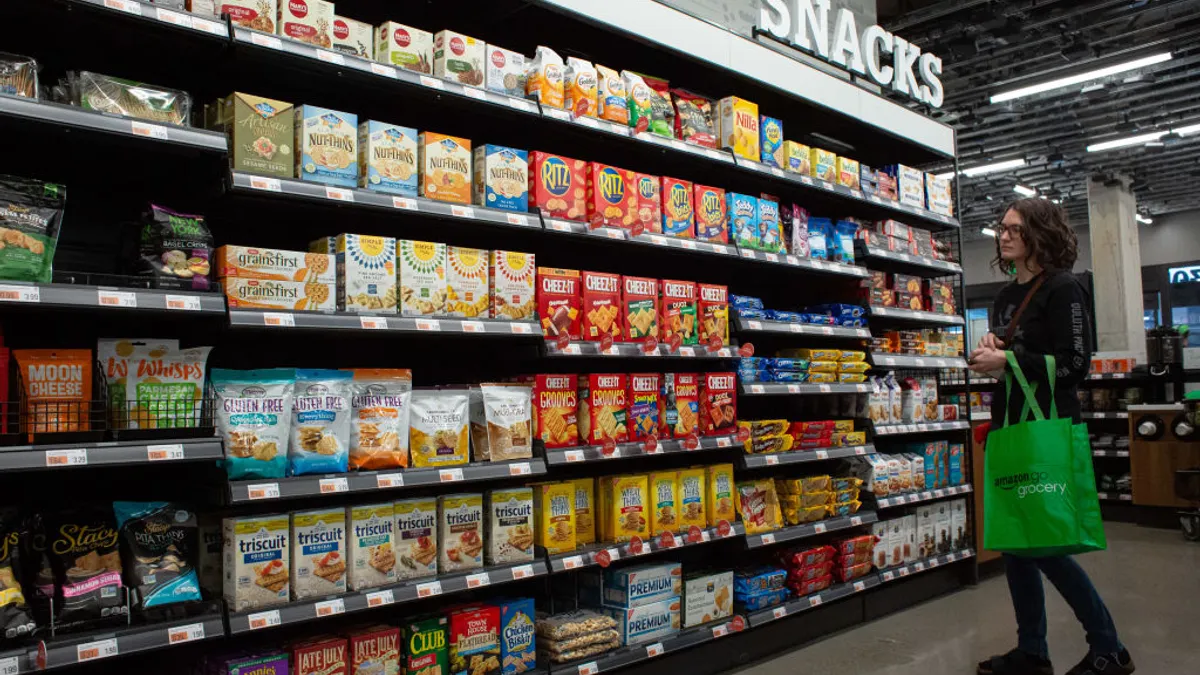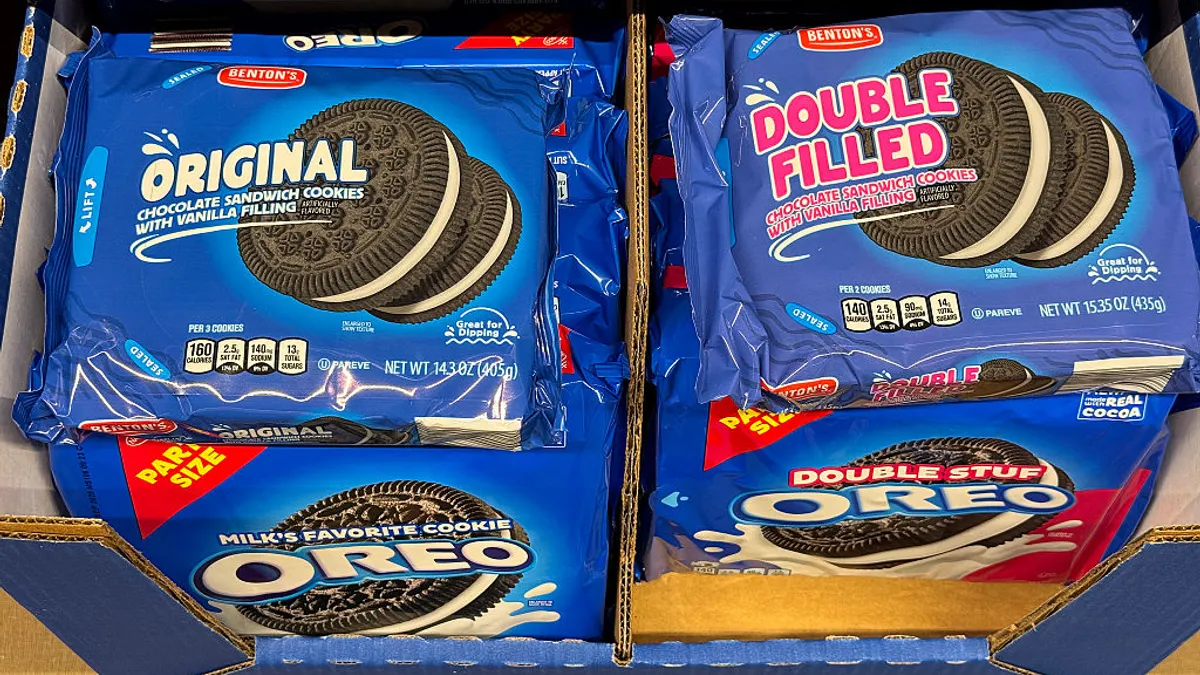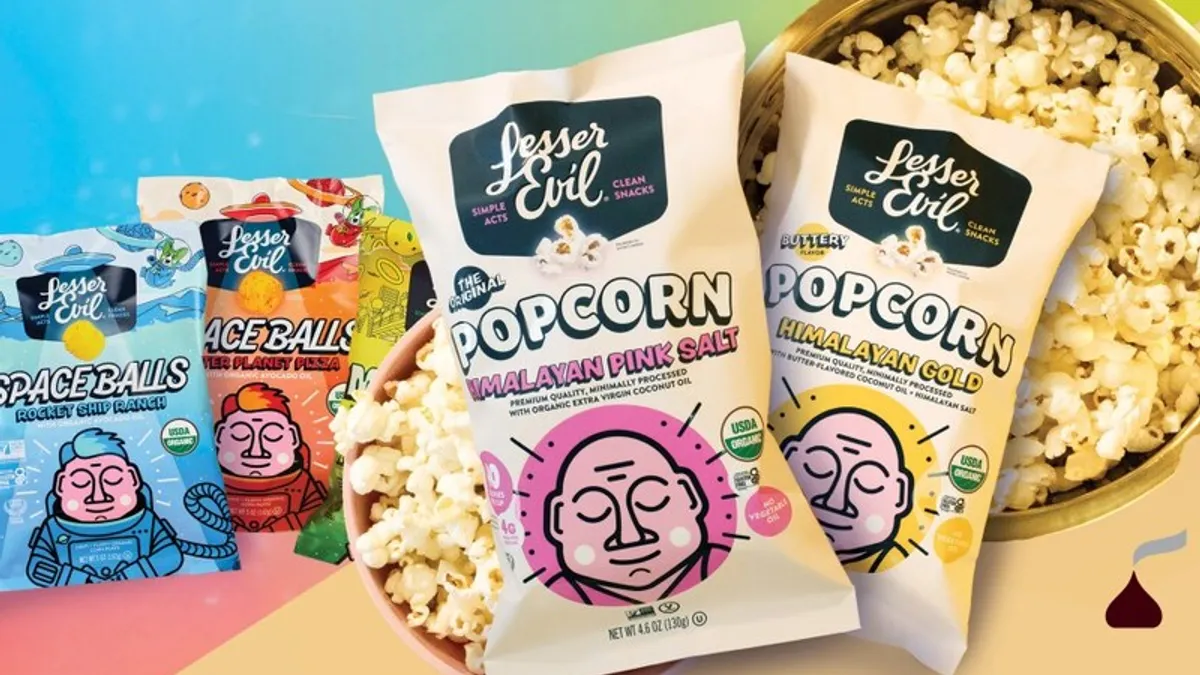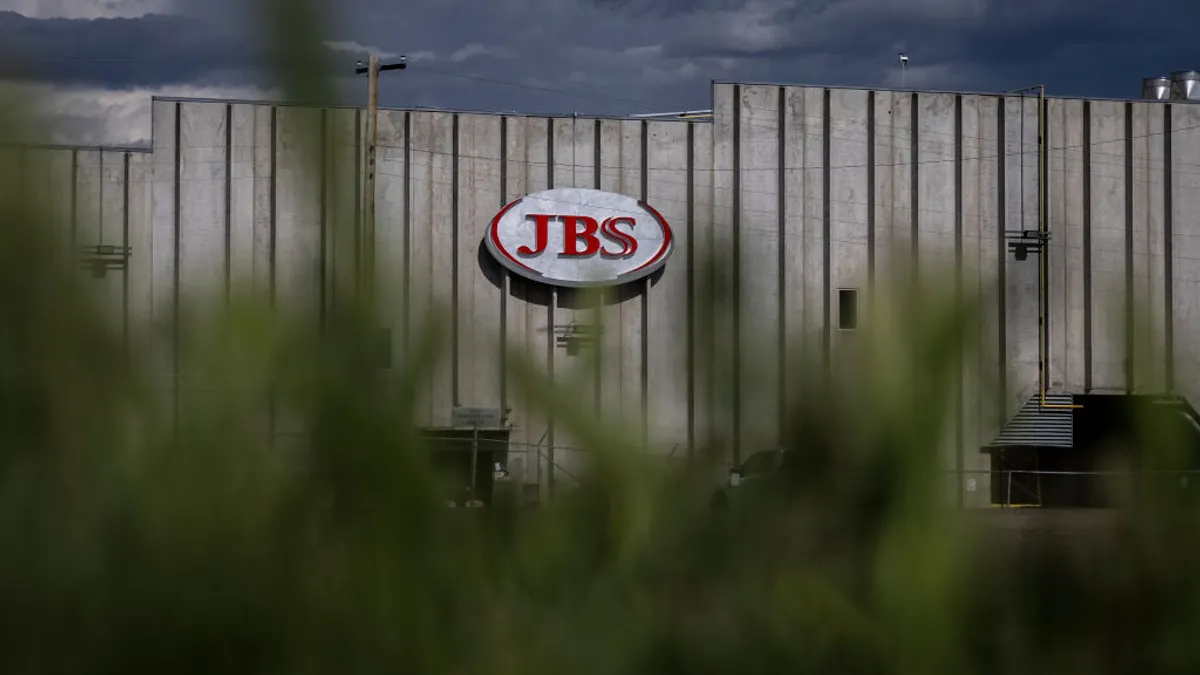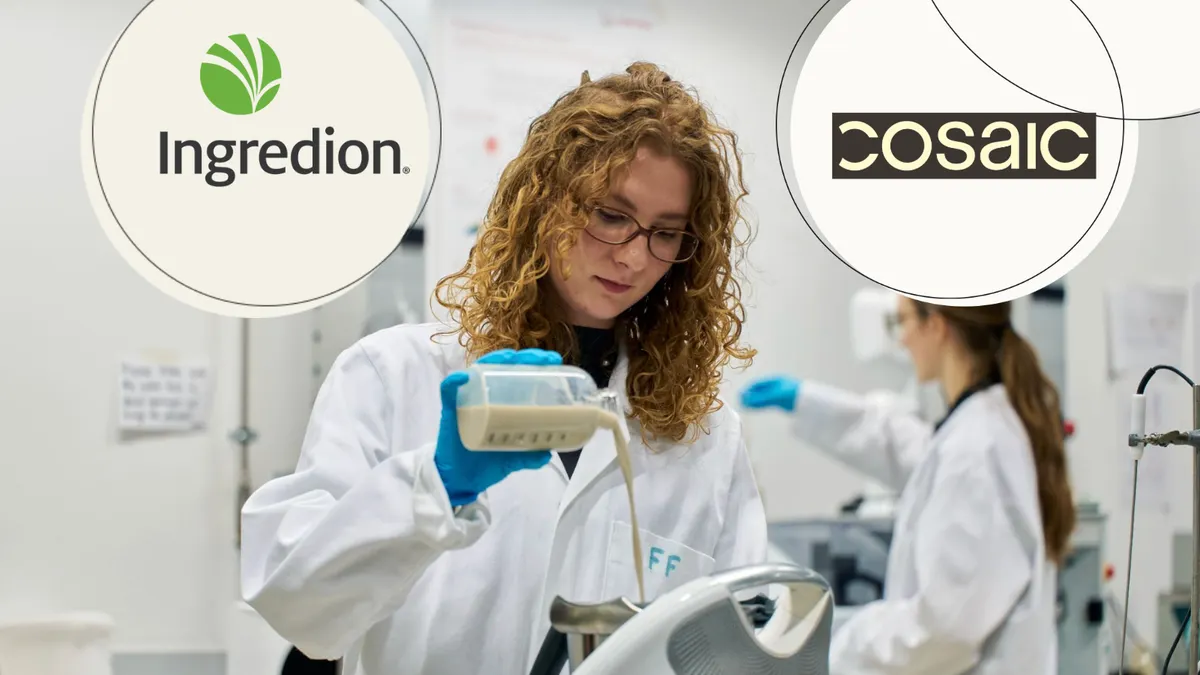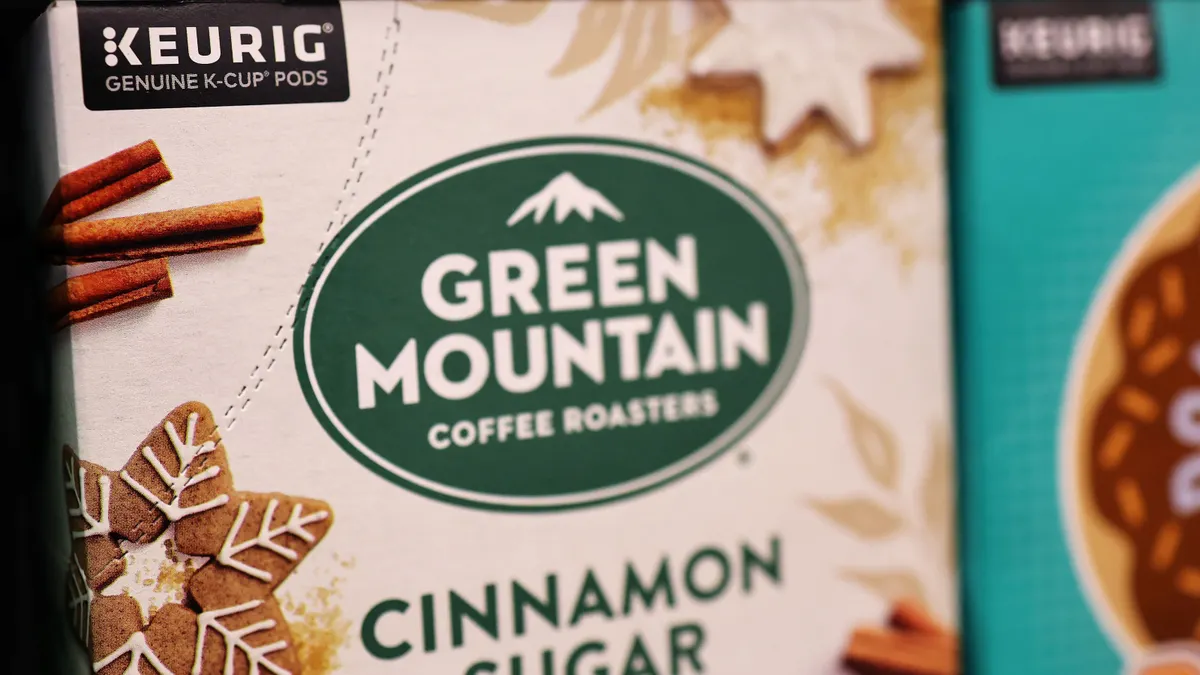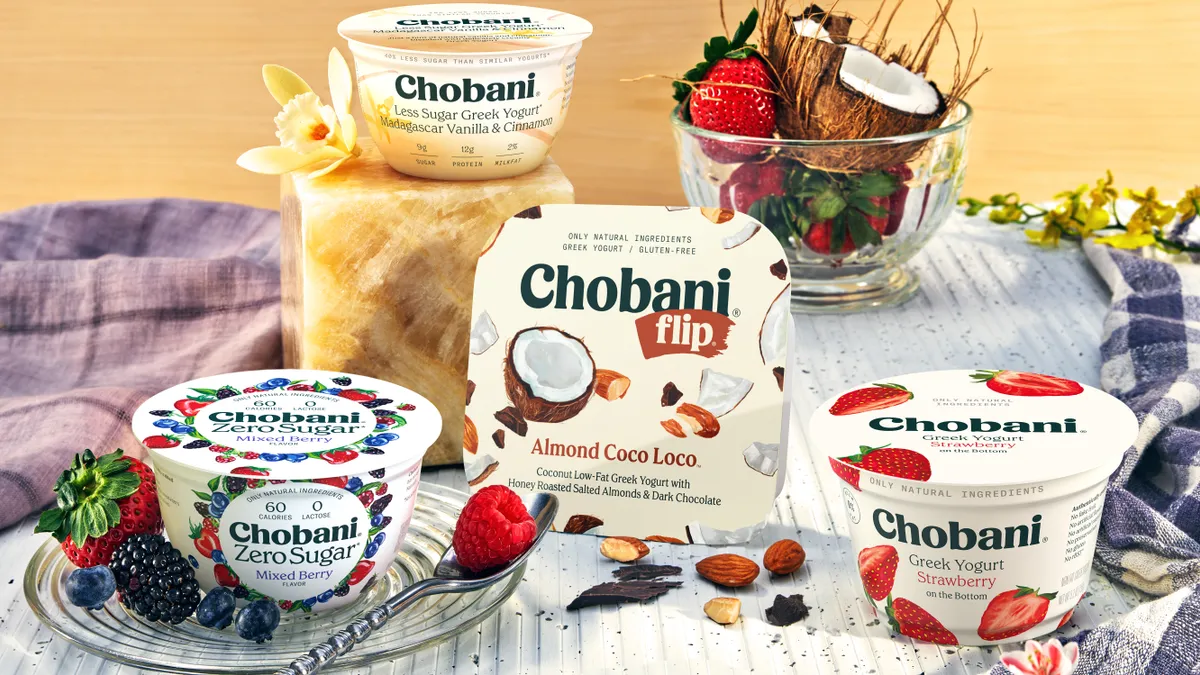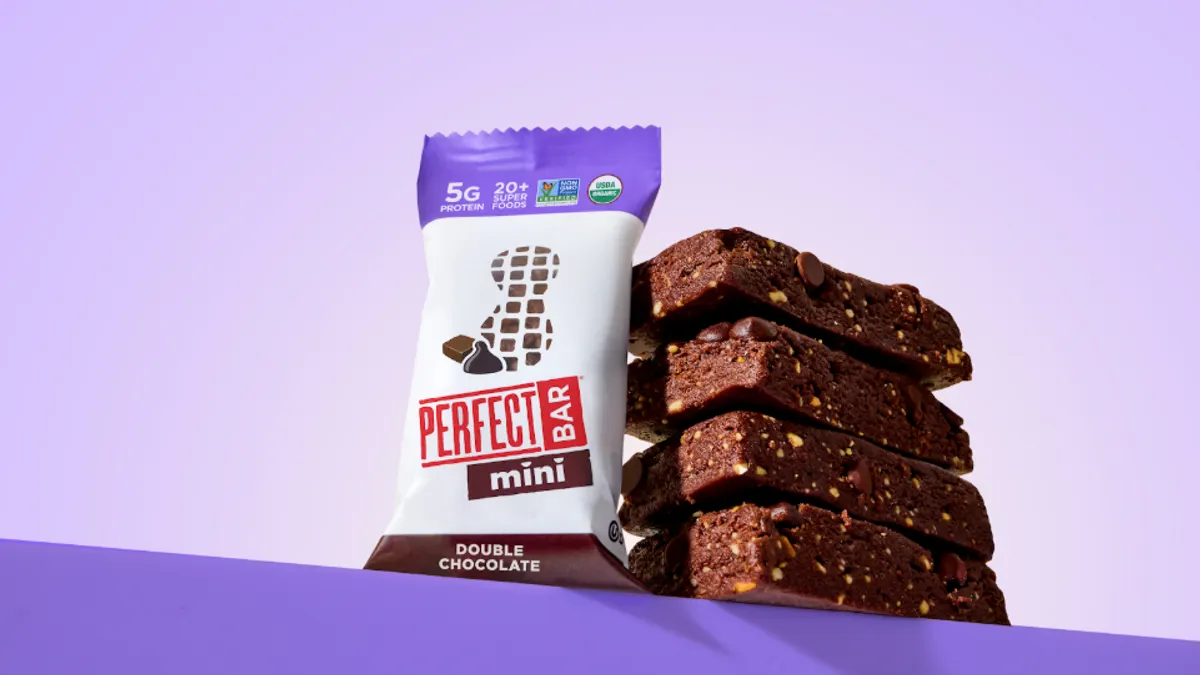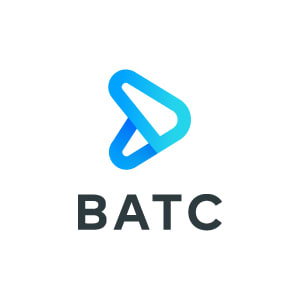The food and beverage industry is in a tough spot.
Declining consumption has depressed sales as shoppers pull back due to inflation. But as spending declines, costs for companies are rising.
Consumers are demanding more function out of what they do eat – putting the onus on companies to spend big on premium ingredients that can support nutritional needs. Tariffs and pressure from the Trump administration to remove artificial dyes and other additives have also created new financial headwinds.
To keep up, companies are restructuring operations, laying off workers or selling off assets. When they can, they're also engaging in smaller M&A deals to enter into trendy areas that speak to current consumer trends.
With 2025 more than halfway through, Food Dive is taking a look at four big trends in food that could dominate the rest of the year.
Big food is feeling the heat
Large food makers have been battered by a slew of forces weighing on their businesses in 2025 — factors that show little sign of abating in the coming months.
The packaged food sector has seen revenue slide as inflation, tariff uncertainty, consumer pullbacks in spending and elevated commodity costs pressure their operations.
“The environment remains challenging,” said Brittany Quatrochi, an analyst with Edward Jones. “It seems that when the companies lap one headwind, there's another one that emerges.”
While there is “a lot of pressure on the companies to absorb the costs, [there’s] not a ton of flexibility to pass them along,” Quatrochi added, which slows growth. While there could be an improvement in sales compared to the first half of the year for many businesses, that will likely be offset by increased costs, she said.
Sales at Kraft Heinz slipped nearly 2% during its second quarter, with the Lunchables maker predicting a 1.5% to 3.5% decline in organic sales during its 2025 fiscal year.
Healthy Choice and Slim Jim owner Conagra Brands warned that its 2026 fiscal year will be impacted by increased costs for commodities, such as cocoa and eggs, as well as tariffs that are impacting steel and aluminum. Tariffs alone are estimated to add about $200 million in costs.
Several companies have announced job cuts this year, including General Mills, Post Holdings and Jack Daniel's owner Brown-Forman as they look to cut costs and improve margins.
Analysts at Morgan Stanley said in mid-August they foresee a “significant restructuring in CPG [including food and beverages] due to persistently low topline growth.” The firm added that organic sales growth bottomed out in the first half of 2025 and that there will likely be sequential improvement in the near term.
M&A to focus on building scale through smaller deals
After a handful of largely midsize deals in 2025, food and beverage M&A is forecast to be more of the same for the remainder of the year.
Dealmaking hasn’t been terribly robust so far this year, but a handful of transactions have taken place that have increased a company’s presence in a trendy area — a pattern that is likely to play out for the next four months.
PepsiCo purchased prebiotic soda brand Poppi for nearly $2 billion while Hershey bought LesserEvil, a maker of healthier snacks such as popcorn and puffs. Ferrero also announced it would purchase cereal giant WK Kellogg for $3.1 billion, a deal that would help the Nutella maker further expand its U.S. footprint.
Robert Moskow, an analyst at TD Cowen, said in a July research note that mega mergers in food have “low success rates and that ‘depth’ tends to beat ‘breadth.’” He said knowledge and investment required in areas such as refrigerated, frozen, shelf-stable and snacks tend to be different.
“We believe that food companies with focused portfolios and category leadership (e.g. Hershey) have a better chance of long-term success than diversified companies trying to leverage operating and marketing capabilities across a wide range of categories,” he said.
Manufacturers are not only dealing with a sharp pullback in consumer spending that has depressed sales, but they are also grappling with cuts to food stamps and uncertainty tied to the Trump administration’s tariff policy.
Despite these headwinds, food and beverage companies remain hungry for growth, positioning them to engage in smaller-scale M&A when the right target comes along at a reasonable price.
To be sure, large deals are likely to happen but they are likely to be rare, and entail a company-specific reason. Earlier this week, Keurig Dr Pepper announced it would purchase JDE Peet’s for $18 billion to boost its struggling coffee business. After the merger, the company would split into two units: coffee and beverages.
A new wave of functional ingredients is coming
Protein has powered the wellness boom during the past few years, but a saturated marketplace has companies leaning into other functional ingredients to appease health-conscious consumers.
More Americans are eating protein than ever before, particularly as a growing number of people take GLP-1 medications for weight loss and require foods that can rebuild muscle. A Cargill report found 61% of Americans increased their protein intake in 2024, versus 48% in 2019.
But consumers are beginning to expect more out of their food. Individuals are searching for premium ingredients that can help with everything from gut and skin health to mood and sleep problems.
"We can think about tailoring our foods in the future," said Nicole Avena, a visiting professor at Princeton University who specializes in nutrition, diet and food addiction.
"Maybe not just toward people who are interested in supporting a GLP-1 journey, but maybe those looking to maintain their brain health as they age. The categories of foods that are potentially out there are really wide open."
One-third of consumers prioritized spending on products with health benefits over the past year, Innova Market Insights found. Health-focused consumers account for $638 billion in total food and beverage spending, including $363 billion in retail, according to Circana data.
Major food and beverage companies have deepened their presence in functional ingredients in 2025, particularly the trendy prebiotics category. PepsiCo bought prebiotic soda brand Poppi, while Coca-Cola introduced its own version under its Simply banner.
Ingredients suppliers also have begun inking new agreements to expand options for companies looking for functional offerings. ADM announced it would sell a postbiotic for mood and sleep in partnership with Asahi Group, while Darling entered into a $1.5 billion joint venture focused on collagen ingredients.
After artificial dyes, what's next for MAHA?
Following a wave of commitments to remove synthetic colors, the "Make America Healthy Again" movement is moving on to a new phase of regulatory pressure that could target everything from chemical additives to ultraprocessed ingredients.
Since Health Secretary Robert F. Kennedy Jr. asked companies to voluntarily remove artificial colors from their products, nearly every major food manufacturer has pledged their intention to comply — including WK Kellogg, General Mills, Nestlé and PepsiCo. States have also ramped up the pressure by banning sugary drinks and foods from federal food assistance benefits, limiting sales for packaged food companies.
Moving forward, the MAHA movement could push for even bigger changes. The FDA is working on a definition of ultraprocessed foods, which could pave the way for future regulation. The agency is also reviewing ingredients already on the market, such as additives used for shelf life.
Kennedy is expected to be involved with the upcoming Dietary Guidelines for Americans that are updated once every five years and offer recommendations for healthy diets. Kennedy said in May he was conducting a "line-by-line" review of the guidelines, which are expected to include recommendations for Americans to eat more plant-based sources of protein such as lentils or peas.
Beyond providing Americans with nutrition advice, the guidelines are used to inform federal nutrition programs including school meals. Nutritionists and medical groups are closely watching whether some of Kennedy's personal and unscientific views on seed oils and saturated fats will be included.
“If the next version of the Dietary Guidelines for Americans recommends replacing seed oils with beef tallow, that would be the exact opposite of current science-based advice to reduce the risk of heart disease,” Peter G. Lurie, president of the Center for Science in the Public Interest, said in a statement. “And it would be a clear sign they’ve decided to discard the evidence base in favor of one individual’s pet peeves.”



